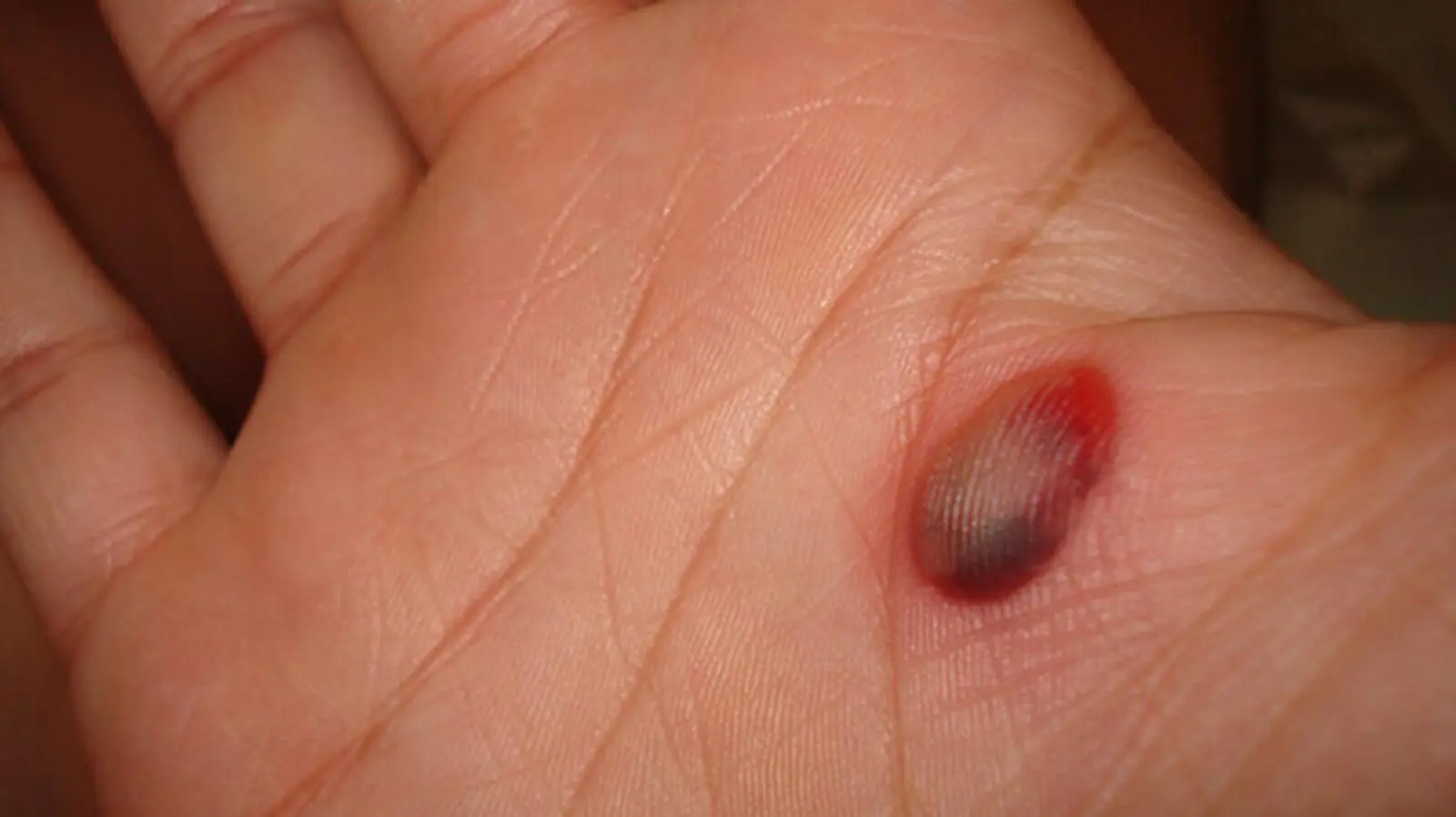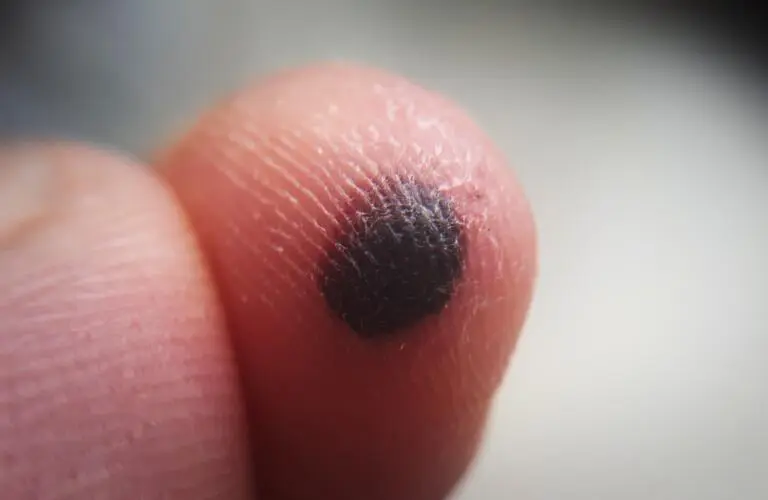Can Blood Blister be Cured?
Yes
Often self-limiting; drainage or aspiration may be performed for symptomatic relief, but the body typically reabsorbs the blood over time

What is Blood Blister?
A blood blister is a blister filled with blood instead of clear fluid. It occurs due to minor trauma or friction. Most blood blisters resolve on their own, but if large or causing discomfort, they may be drained under sterile conditions.

Clinical Aspects

Characteristics
Fluid-filled blister that forms under the skin, often containing blood

Symptoms
Raised, fluid-filled bump with a red or purple hue

Diagnosis
Visual examination, patient history

Prognosis
Generally resolves without complications

Complications
Risk of infection, potential for scarring
Etiology and Treatment

Causes
Trauma or injury to blood vessels beneath the skin

Treatments
Self-resolving in many cases; if necessary, aspiration or drainage of the blood blister

Prevention
Self-resolving in many cases; if necessary, aspiration or drainage of the blood blister
Public Health and Patient Perspectives

Epidemiology
Common, often a consequence of minor trauma

Patient Perspectives
Adequate wound care contributes to optimal healing
While the information presented here reflects the current knowledge about these conditions and treatments, it’s important to understand that individual cases may differ. Consulting with a healthcare professional is crucial for accurate information tailored to your specific needs.
Share: